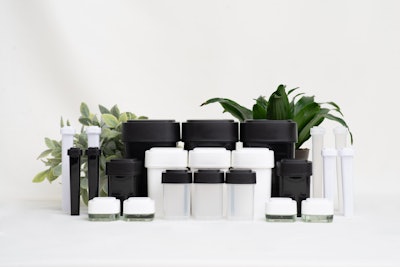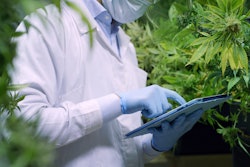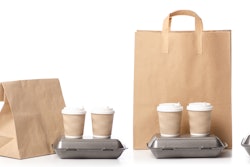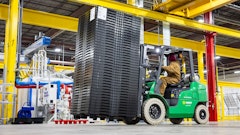
The pandemic has undoubtedly caused ripple effects across various industry sectors around the globe. In the United States, two major after effects are the solidification of the cannabis industry, as well as the heightened awareness amongst consumers in regards to their consumption impact on the environment.
In a recent BCG survey of 3,000 people across eight countries, 95% believe making a change to practice sustainable consumer behavior can effectively reduce their personal output of “unsustainable waste”. As with other consumer goods sectors, more cannabis customers are demanding that brands help guide them toward eco-conscious decisions. Cannabis packaging companies in particular have heard the call, as cannabis packaging waste is one of the biggest environmental concerns. As a result, there is an ever-growing market of diversified packaging solution offerings.
However, there are a lot of misconceptions regarding what raw materials are truly sustainable, and the qualities of each material in comparison to others. For a brand to be more sustainable, it should assess what the life cycle for a manufactured product will look like based on the materials used. Plastic, metal, paper and glass options are the most popular, but each have their individual constraints to reusability and recyclability.
Plastic
Consumers have become desensitized to the mountainous problem of single-use plastic, until now. Most cannabis packaging solutions are made of Polypropylene (PP), a plastic that can be found in takeaway food containers, houseware, textiles and other consumer good packaging. It is deemed less harmful than other cannabis packaging plastics, such as Polystyrene (PS), found in single-use cups and plastic utensils, and Polyethylene terephthalate (PET), found in single-use food containers and water bottles.
Polypropylene as a common cannabis packaging material can be designed for long term cannabis storage as it can be manufactured to block UV light exposure. This will ultimately prevent oxidation and degradation of the THC in the flower to prevent the creation of CBN, which might not be the effect THC consumers are necessarily seeking.
Although polypropylene is used for a majority of cannabis packaging and can be designed to preserve cannabis terpenes. However, creating an airtight seal to control humidity may require an additional type of plastic or other raw material. A supplementary material may cause the product to be deemed non-recyclable, therefore, mono-material packaging is ideal.
Glass
Glass is another material option for cannabis packaging, as it has innate qualities that enhance product preservation. The higher quality and durability of glass makes it perfect for cannabis storage as it is air-tight and can regulate humidity levels to prevent mold growth and terpene degradation. Glass is inert and impermeable, making it the most stable out of all packaging materials. Glass containers are also infinitely reusable and easily recyclable for cannabis packaging. Flower preservation in glass containers is proven to be longer lasting, additionally, cannabis extracts particularly benefit from properly sealed glass concentrate jars due to these qualities.
Click here to hear more about the circular economy and reusable packaging:
Aluminum bags
Many consumers that have purchased cannabis from dispensaries are familiar with metallized flexible pouches. However, these options are not necessarily eco-friendly. Although these pouches exhibit high preservation performance due to multiple layers of aluminum powder bonded to plastic surfaces, Vapor Metalized Polyethylene Terephthalate (PET) films are not compostable, seldom recyclable and can only be re-used until the material quality deteriorates. Stand up barrier pouches are manufactured to be compliant and protective of the product inside and although these options are more economical, they do not cater to sustainability.
Paper
Paper is a seemingly sustainable option as it is a renewable resource, but it is a fragile material as a packaging solution. Exit paper bags or cardboard packaging, are generally recyclable or compostable as long as it is manufactured without contaminant materials. But, in order to make paper packaging child resistant-certified, other materials such as polymers are usually necessary. Additionally, depending on the type of paper packaging, it may not be a durable enough material to protect and preserve cannabis to the level other materials do. As a result, additional materials may be required to protect the product from moisture droplets and humidity, and to preserve the natural qualities of cannabis such as terpenes. Albeit a sustainable material, paper should be carefully considered as a packaging solution based on the product needs.
Hemp
With the rising popularity of hemp as a cannabis packaging solution, the sustainability of the material seems almost unquestionable. However, products labelled as “hemp” might mislead consumers into believing the product is all natural, when very few packaging solutions are entirely made of hemp. The infrastructure to manufacture hemp was historically forced into obsolescence and has only recently made a resurgence. Hemp is seen in packaging usually manufactured with other raw materials.
A green industry?
Whether there is a truly “sustainable” product or not is difficult to determine. In reality, for every product, there are varying levels of environmental impact. Some products simply have less of a negative impact than others.
The cannabis industry relies on the cultivation and sale of a plant, therefore we have a unique responsibility to the environment. As an industry that’s a proponent of holistic healing and wellness, we must acknowledge the amount of work that still needs to be done in the sustainability space. Whether companies approach this responsibility with diversified offerings of eco-friendly alternatives, circular economy initiatives or a total re-brand, sustainability grows more complex every day. In order to avoid the greenwashing, companies must educate themselves and their customer base. Greenwashing poses a serious danger to the industry, taking away time and resources from effective sustainable options for the sake of falsely appearing eco-friendly to the public. Greenwashing misleads well-intentioned consumers into believing they are making sustainable choices. Not only does it risk the trust consumers have in a brand, greenwashing negatively impacts the cannabis industry as a whole.
As the cannabis industry continues to scale, the education and availability of sustainable packaging solutions will depend on thought leaders and businesses. With commitment to constant innovation and growth, cannabis might just be able to pioneer a literal and figurative, green industry.





![Adobe Stock 280800711 [converted]](https://img.foodlogistics.com/files/base/acbm/fl/image/2021/08/AdobeStock_280800711__Converted_.611e898daa123.png?auto=format%2Ccompress&fit=crop&h=167&q=70&rect=0%2C53%2C900%2C507&w=250)













